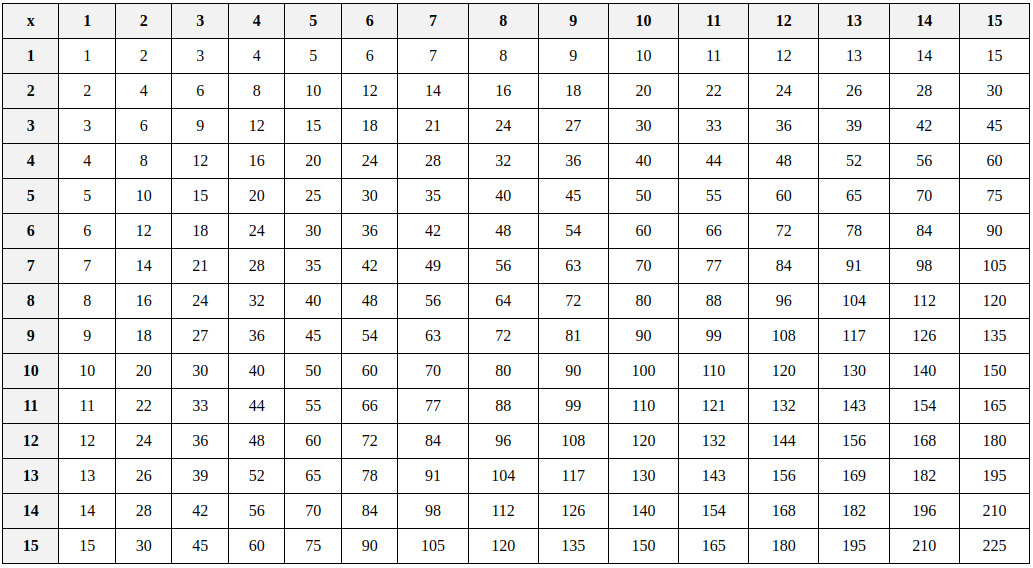A multiplication chart, also known as a times table chart, is a table used to define the multiplication operation for an algebraic system. In its most common form, it’s a grid that shows the products of pairs of numbers. These numbers are usually whole numbers, and the chart is often used as a tool in primary education to help children learn and memorize multiplication facts.
Here’s how a basic multiplication chart is structured and how you can use it:
Structure of a Multiplication Chart
- Grid Format: The chart is typically in a grid format. The top row and the leftmost column list the numbers being multiplied.
- Size: A standard chart might show the multiplication facts from 1×1 up to 10×10, 12×12, or even higher.
- Cells: Each cell in the grid shows the product of the number from the top row and the number from the left column.
How to Use a Multiplication Chart
- Learning Multiplication Facts: Locate the numbers you want to multiply along the top row and the left column. Follow these two numbers to the point where their paths intersect on the chart. This intersection point gives you the product.
- Memorization Aid: Regularly reviewing the chart can help memorize multiplication facts, which is fundamental in early mathematics education.
- Pattern Recognition: By observing the chart, students can notice patterns in multiplication. For example, the products in any row or column increase sequentially, and the diagonal from the top left to the bottom right shows the squares of the numbers (1×1, 2×2, 3×3, etc.).
- Checking Work: It can be used to verify the answers to multiplication problems.
- Building Foundation for Advanced Concepts: Understanding and memorizing these basic multiplication facts is crucial for learning more advanced math topics like division, fractions, and algebra.
Example
If you want to find the product of 7 and 5, you would look for the number 7 in the left column and the number 5 in the top row. Follow these to where they intersect, and you’ll find 35, which is the product of 7 and 5.
Tips for Using a Multiplication Chart
- Start with Smaller Numbers: If you’re a beginner, start with smaller numbers to build confidence.
- Use it Regularly: Regular use helps in memorizing the facts.
- Look for Patterns: This can make learning more engaging and effective.
- Combine with Other Learning Methods: Such as verbal repetition, writing out tables, or using multiplication games.
